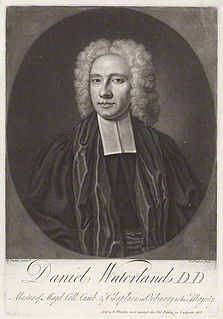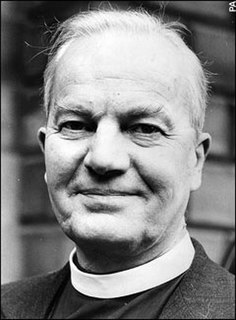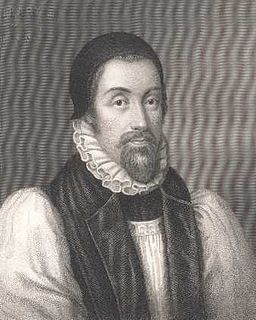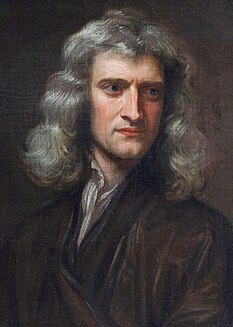Arianism is a nontrinitarian Christological doctrine which asserts the belief that Jesus Christ is the Son of God who was begotten by God the Father at a point in time, a creature distinct from the Father and is therefore subordinate to him, but the Son is also God. Arian teachings were first attributed to Arius, a Christian presbyter in Alexandria of Egypt. The teachings of Arius and his supporters were opposed to the theological views held by Homoousian Christians, regarding the nature of the Trinity and the nature of Christ. The Arian concept of Christ is based on the belief that the Son of God did not always exist but was begotten within time by God the Father.

Sir William Jones FRS FRSE was an Anglo-Welsh philologist, a puisne judge on the Supreme Court of Judicature at Fort William in Bengal, and a scholar of ancient India, particularly known for his proposition of the existence of a relationship among European and Indian languages, which would later be known as Indo-European.

The Christian doctrine of the Trinity holds that God is one God, but three coeternal consubstantial persons or hypostases—the Father, the Son, and the Holy Spirit—as "one God in three Divine Persons". The three Persons are distinct, yet are one "substance, essence or nature" (homoousios). In this context, a "nature" is what one is, whereas a "person" is who one is. Sometimes differing views are referred to as nontrinitarian. Trinitarianism contrasts with positions such as Binitarianism and Monarchianism, of which Modalistic Monarchianism and Unitarianism are subsets.

Samuel Clarke was an English philosopher and Anglican clergyman. He is considered the major British figure in philosophy between John Locke and George Berkeley.
John Hutchinson was an English theologian and natural philosopher.

George Horne was an English churchman, academic, writer, and university administrator.

Daniel Cosgrove Waterland was an English theologian. He became Master of Magdalene College, Cambridge in 1714, Chancellor of the Diocese of York in 1722, and Archdeacon of Middlesex in 1730.

Thomas Forsyth Torrance,, commonly referred to as T. F. Torrance, was a Scottish Protestant theologian. Torrance served for 27 years as professor of Christian dogmatics at New College, in the University of Edinburgh. He is best known for his pioneering work in the study of science and theology, but he is equally respected for his work in systematic theology. While he wrote many books and articles advancing his own study of theology, he also edited the translation of several hundred theological writings into English from other languages, including the English translation of the thirteen-volume, six-million-word Church Dogmatics of Swiss theologian Karl Barth, as well as John Calvin's New Testament Commentaries. He was a member of the famed Torrance family of theologians.
Dom Serenus Cressy, O.S.B.,, was an English convert and Benedictine monk, who became a noted scholar in Church history.

John Overall (1559–1619) was the 38th bishop of the see of Norwich from 1618 until his death one year later. He had previously served as Bishop of Coventry and Lichfield, as Dean of St Paul's Cathedral from 1601, as Master of Catharine Hall from 1598, and as Regius Professor of Divinity at Cambridge University from 1596. He also served on the Court of High Commission and as a Translator of the King James Version of the Bible.
Unitarianism, as a Christian denominational family of churches, was first defined in Poland-Lithuania and Transylvania in the late 16th century. It was then further developed in England and America until the early 19th century, although theological ancestors are to be found as far back as the early days of Christianity. It matured and reached its classical form in the middle 19th century. Later historical development has been diverse in different countries.
Jeremy Nigel Morris is a British historian, Church of England priest and academic. He specialises in church history. Since 2014, he has been Master of Trinity Hall, Cambridge. Previously, he was Dean of Trinity Hall from 2001 to 2010, and Dean of the Chapel of King's College, Cambridge from 2010 to 2014.

Robert Clayton (1695–1758) was an Irish Protestant bishop, now known for his Essay on Spirit. In his own lifetime he was notorious for his unorthodox beliefs, which led his critics to question whether he could properly be called a Christian at all, and at the time of his death he was facing charges of heresy.
The Socinian controversy in the Church of England was a theological argument on christology carried out by English theologians for around a decade from 1687. Positions that had remained largely dormant since the death in 1662 of John Biddle, an early Unitarian, were revived and discussed, in pamphlet literature.
John Bruckner was a Dutch Lutheran minister and author, who settled in Norwich, England.
Hackney Phalanx was a group of high-church Tory defenders of Anglican orthodoxy prominent for around 25 years from c. 1805. They consisted of both clergy and laymen, and filled many of the higher posts of the Church of England of the time. The Phalanx, also called the Clapton sect by analogy with the evangelicals of the Clapham sect, were active reformers within their common theological beliefs, and controlled the British Critic. One of the Phalanx leaders, Henry Handley Norris, was particularly influential in the church appointments made by the Earl of Liverpool. A. B. Webster characterized the group as:
a body of friends sharing a common theological and political outlook, forming a compact group with an agreed attitude to most of the religious and political measures of the day. We might have described it as a "pressure group" if this did not exaggerate the self-consciousness of the Phalanx. They remained to the end a body of friends, rather than an ecclesiastical or a religious party.
Joseph Hallett III (c.1691–1744) was an English nonconformist minister and author.

Samuel Glasse D.D. (1735–1812) was an English cleric and Fellow of the Royal Society. He was of High Church views, in the circle of William Jones of Nayland, a Hutchinsonian, and a loyalist of the unrest in the 1790s.
Walker King was Archdeacon of Rochester from 6 July 1827 until his death.
The public domain consists of all the creative works to which no exclusive intellectual property rights apply. Those rights may have expired, been forfeited, expressly waived, or may be inapplicable.

The Encyclopædia Britannica, Eleventh Edition (1910–11) is a 29-volume reference work, an edition of the Encyclopædia Britannica. It was developed during the encyclopaedia's transition from a British to an American publication. Some of its articles were written by the best-known scholars of the time. This edition of the encyclopedia, containing 40,000 entries, is now in the public domain, and many of its articles have been used as a basis for articles in Wikipedia. However, the outdated nature of some of its content makes its use as a source for modern scholarship problematic. Some articles have special value and interest to modern scholars as cultural artifacts of the 19th and early 20th centuries.

















